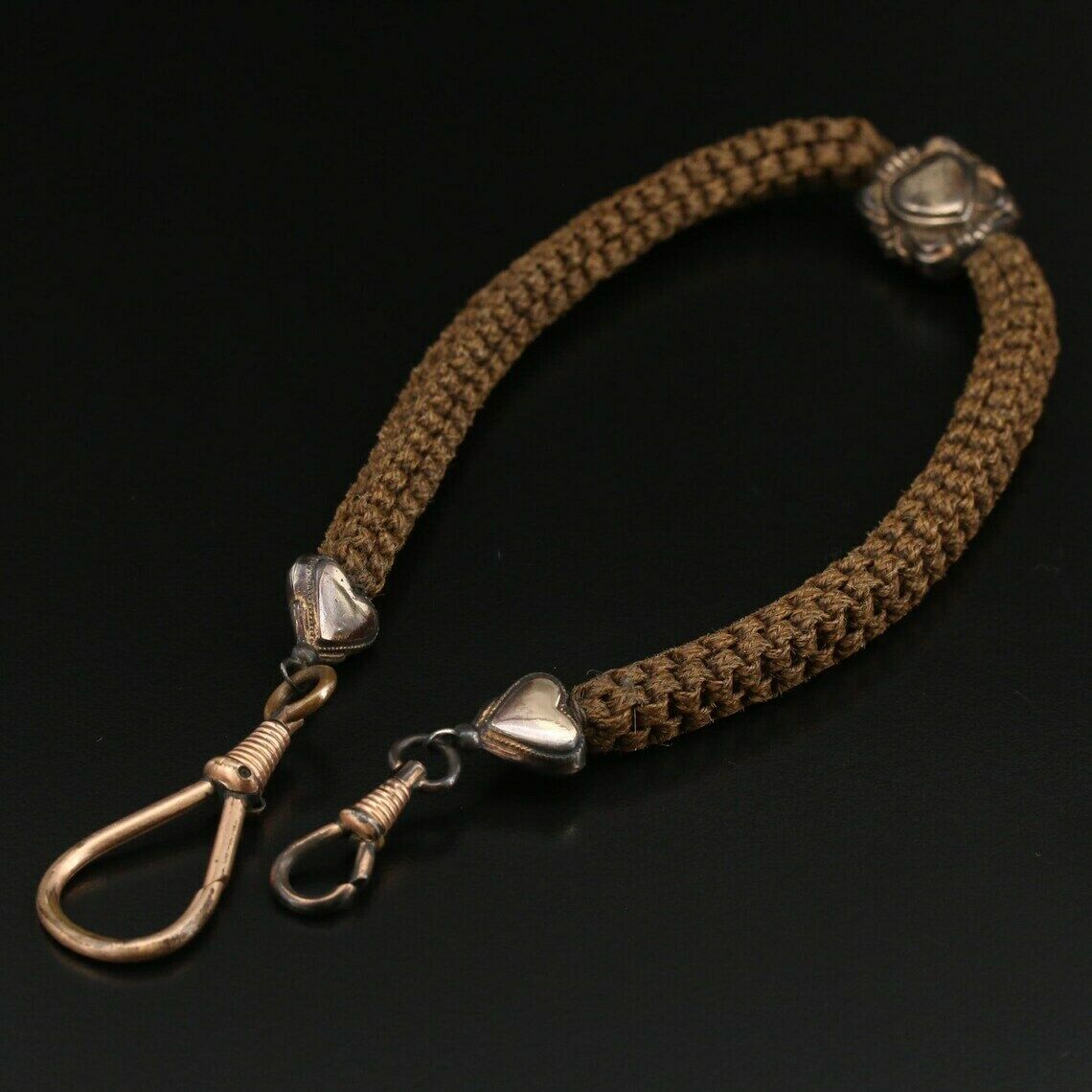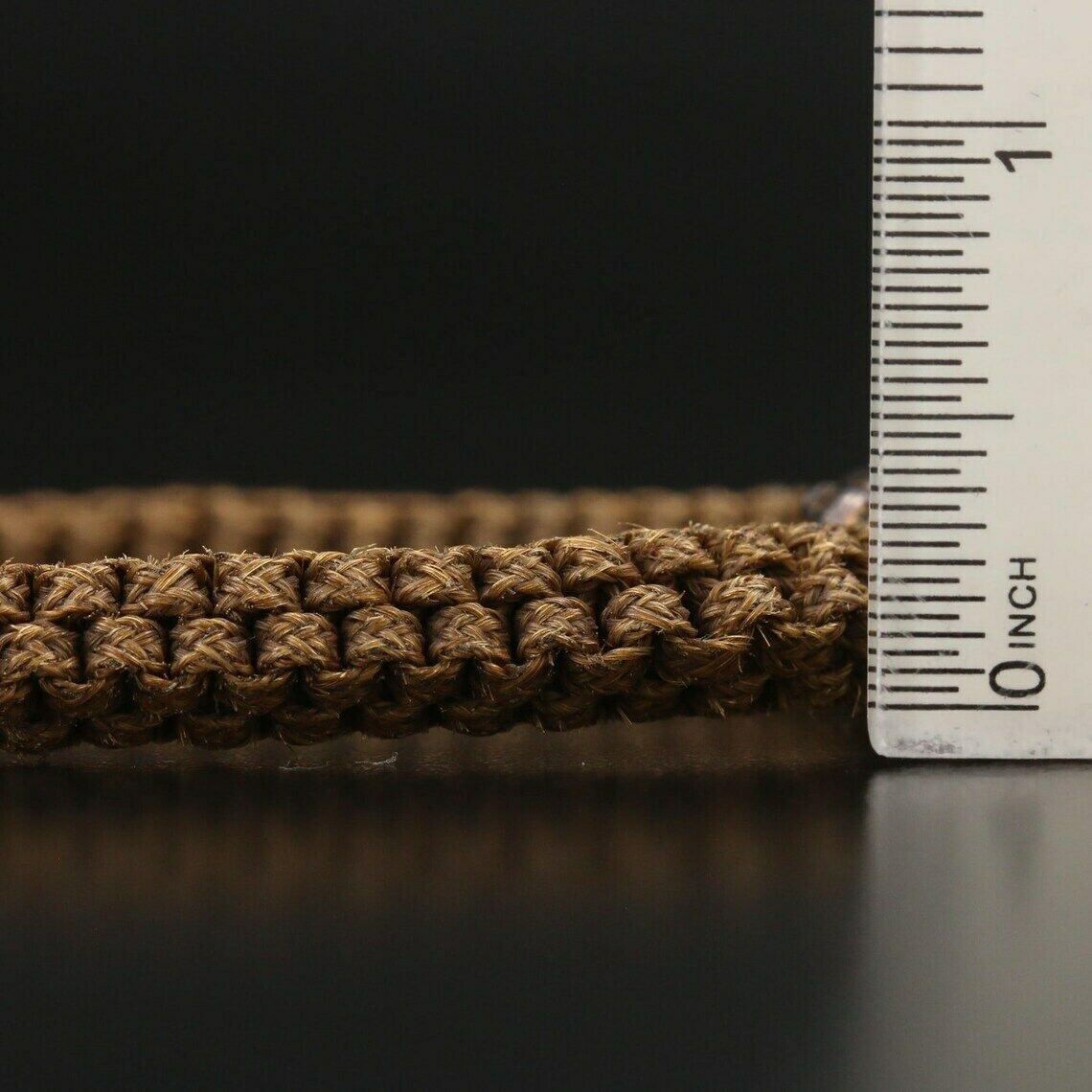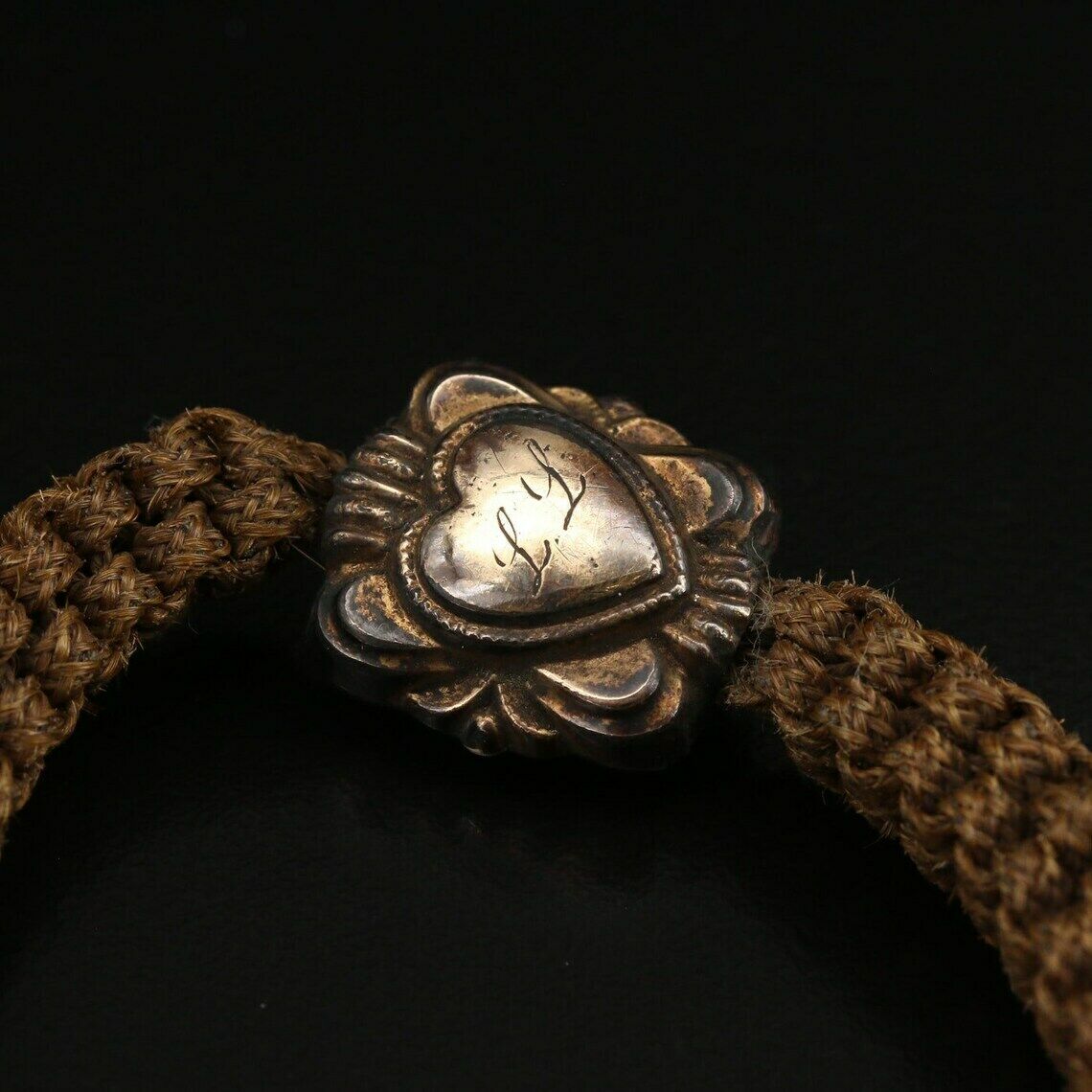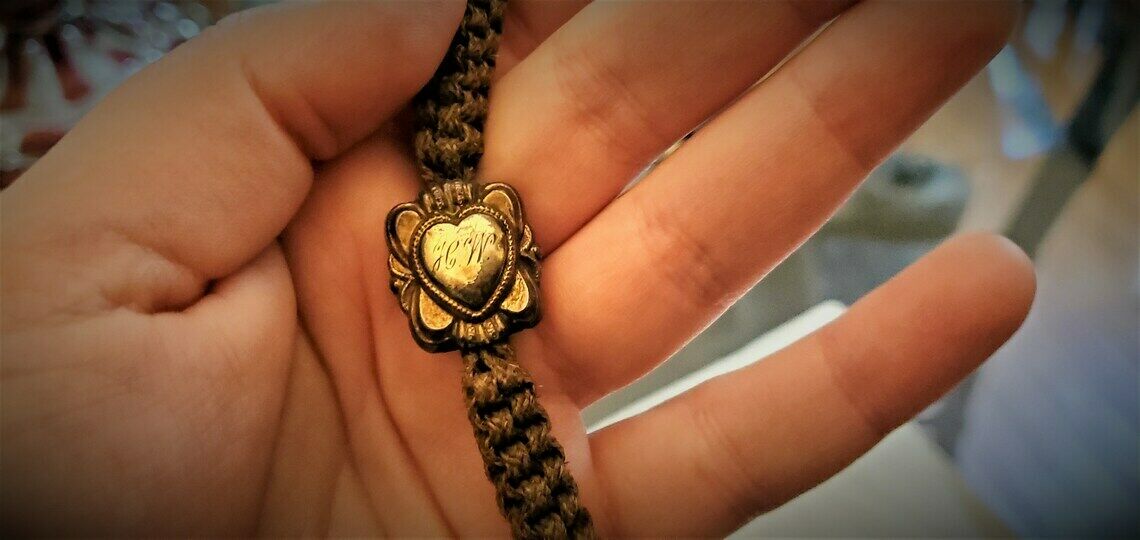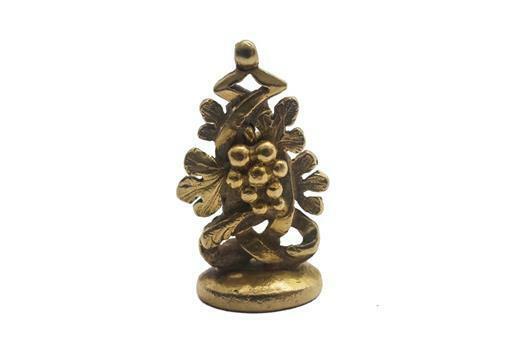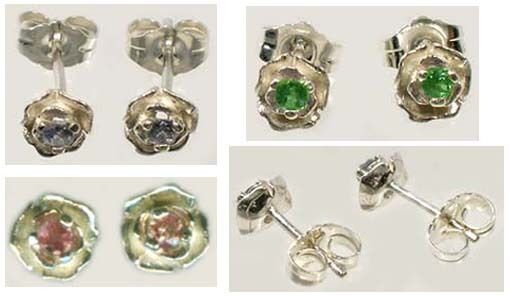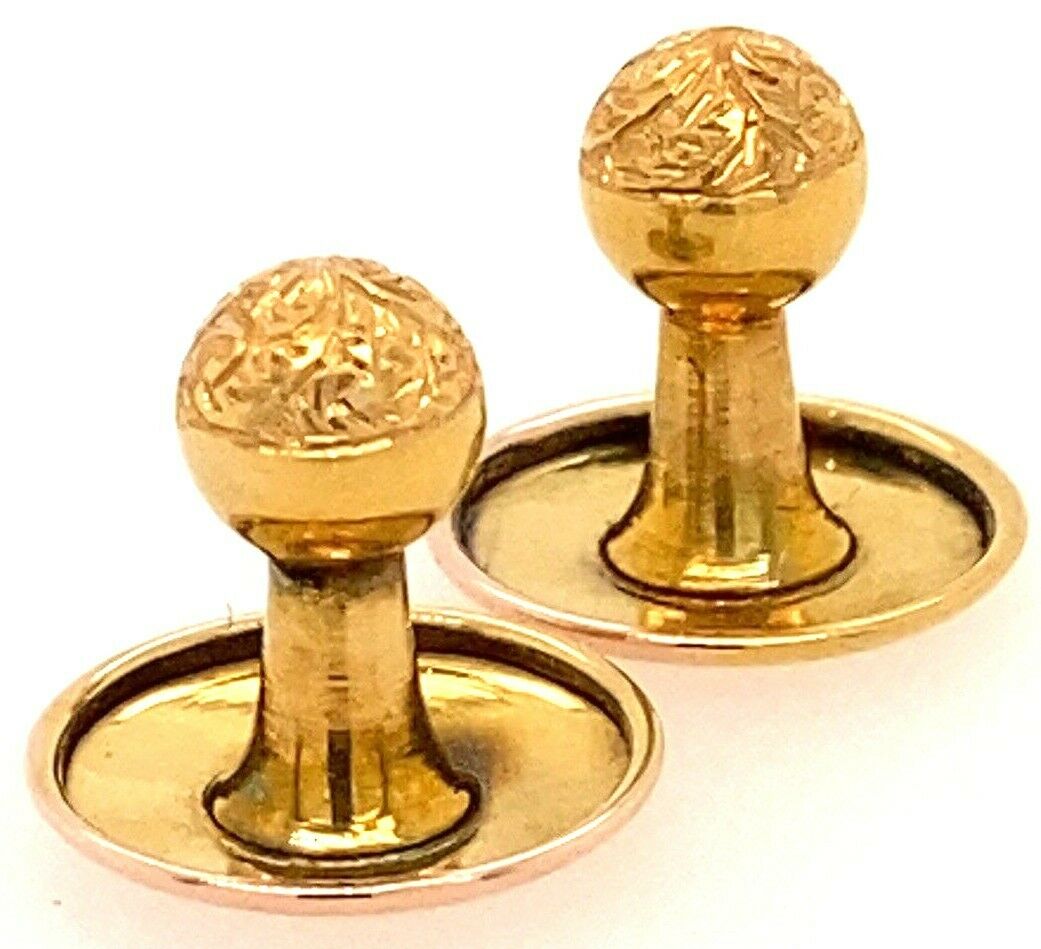-40%
Victorian Hairwork Watch Chain Antique Mourning Jewelry Hair Work Braid Heart
$ 78.84
- Description
- Size Guide
Description
This prime example of Victorian mourning jewelry features elaborately-woven brown hair in a substantial box braid, accented by heart slides (one engraved) and with dog clips at each end. There is wear commensurate with age. The chain measures 13.25" end to end. Approximately 10k gold plated. The metal pieces are worn but the hair is in excellent shape.Initials "HW" and "LL" on the central heart charm.
Reasonable offers considered. Never a shipping charge. Check out my other listings for more great antique items!
Its strength and durability mean that hair is an excellent substitute for other fibers. Since at least the Middle Ages, members of the elite classes have been using the hair of their loved ones for jewelry or other decorative arts, falling under the umbrella term of Hairwork. Art History Professor Geoffrey Batchen states in his book, “Forget Me Not: Photography and Remembrance,” that “hair, intimate and yet easily removed, is a convenient and pliable stand-in for the body of the missing, memorialized subject.”
Locks of hair were woven into intricate designs, sometimes combined with several other deceased persons’ hair to create a larger remembrance, or Memento Mori (Latin, “remember you must die”), piece. We have a beautiful mourning wreath in our museum following this tradition. Hair could also be ground into a powder and incorporated into paint. Popular mourning motifs included women weeping at graves, cherubs, urns, and floral displays.
The practice gained more popularity outside of the aristocracy during the Victorian era. Queen Victoria wore a lock of her deceased husband’s hair in a locket above her heart as part of her decades-long mourning, as well as a locket-style bracelet of her nine children’s hair on her wrist. The popularity of the art wasn’t just a result of the average person wanting to emulate the queen, though. Death was an ever-present reality of life in the Victorian era: From disease to infant mortality to wars, mourning became a staple of culture. In America, the massive death toll of the Civil War in particular fueled this tradition.
